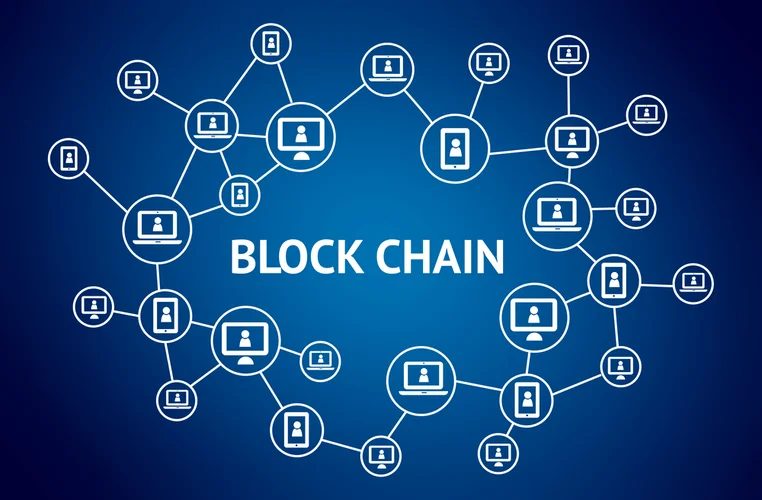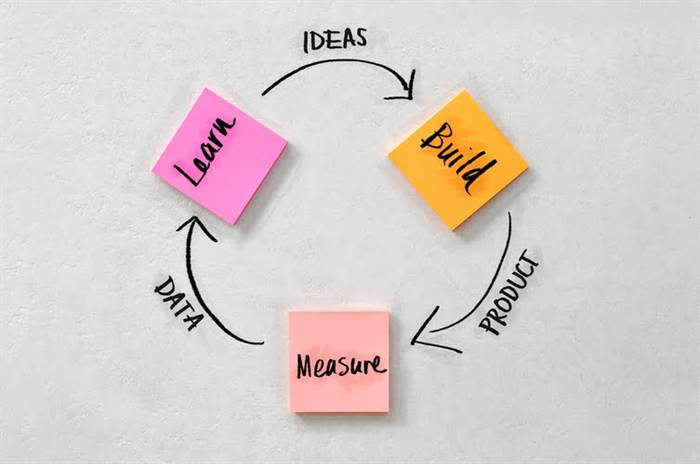Developers can give consideration to constructing software program, and so they see their work go stay minutes after they’ve finished working on it. A DevOps instance would be the rapid and efficient deployment of code on a cloud platform. It’s a steady process; rather than one major improve every few months or years, smaller, incremental updates are released continuously. This helps builders to build, take a look at, and deploy updates or releases without compromising the infrastructure’s stability.
- Outside of labor I’m sharpening my fathering abilities with a beautiful toddler.
- CI/CD is about achieving the appropriate quantity of automation to enhance the system’s efficiency with out affecting its stability.
- It’s a game-changer for detecting points and shortening the feedback loop for user-facing modifications.
- This can impact a company’s health care and can take up plenty of a company’s vitality, time, and energy.
- It’s meant to encourage developers to repeatedly make small enhancements and never be afraid to alter the environment—which brings us to steady integration and delivery.
- DevOps, short for improvement and operations, is a collaborative methodology meant to interrupt down the barrier between growth and operations groups in an organization.
Its goal is to develop and keep a typical, shared culture between groups, thus implementing shared enterprise processes and enhancing collaboration ranges. When applied correctly, CI/CD enables the frequent delivery of software adjustments to production. This offers users more opportunities to share feedback, thereby embracing a culture of agile improvement https://www.globalcloudteam.com/. Just like CI optimizes building and testing processes, continuous supply (CD) boosts the efficacy of packaging and deployment activities. Traditionally, integration is a pricey exercise that requires a lot of back-and-forth among totally different engineering groups. To handle this challenge, steady integration drives the adoption of automation tools for testing and constructing.
CI/CD entails the continual automation and monitoring of the application lifecycle–from integration and testing to the delivery and deployment of the product. CD is in regards to the processes that need to occur after code is integrated for app changes to be delivered to users. These processes take totally different varieties, depending on the culture of the team and the sort of app it’s creating.
CI/CD and DevOps share a typical goal—to allow swift and strong software growth. The DevOps tradition outlines the best practices for high-quality and environment friendly software program improvement. Conversely, the CI/CD pipeline covers the core activities in the software delivery course of. While each ideas overlap considerably, variations exist amongst them when it comes to scope, purpose, process, implementation, stages, and advantages. In the past, human testing performed an necessary position in uncovering software bugs undetectable by automated processes.
CI/CD is defined as a set of improvement practices that enable the speedy and reliable delivery of code adjustments. DevOps is outlined as a collection of ideas, practices, processes, and technologies that enable development and operations teams to work collectively to streamline product improvement. With this follow, every change that passes all stages of your production pipeline is launched to your prospects. There’s no human intervention, and solely a failed test will prevent a model new change to be deployed to production.
Featured Cloud Providers
Teams require an integrated toolchain of applied sciences to facilitate collaborative and unimpeded development efforts. Agile, however, give attention to identifying and constructing options that match the user’s expectation. The course of is particular to the event group and entails steps to extend their productivity. Continuous Integration and Continuous Delivery work in tandem to bolster the DevOps capabilities of an organization ci/cd monitoring. The focal point of Continuous Integration is to make the discharge of software merchandise easier by offering a reliable, constant, and automated process to construct, bundle together, and take a look at software program applications. Frequent utility upgrades imply a shorter feedback loop with prospects.
Now that you know what the difference is between CI and CD, you’ll find a way to see how, when used collectively, they greatly accelerate the suggestions loop — facilitating robust, stable, and high-quality platforms with limited disruption. The extra a company leans on and improves its CI/CD processes, the more smoothly its production pipeline will run. CD, as its name implies, is a technique that leverages automation to expedite the supply of new code.
It’s crucial to do this ‘continuously’ as a end result of the longer improvement work sits in a characteristic branch, the extra probably it is to cause merge conflicts when merged to major. What’s extra, if improvement work is merged to the main branch in large chunks, quite than incrementally, there’s a large chance that this last merge will fail. This could be particularly frustrating if work from the primary day of a six-month project causes the merge of the whole project’s work to fail. In each definition of CI/CD, ‘CI’ will stand for ‘continuous integration’. ‘Integration’ is predicated upon your use of model control and, in a simple function branch growth mannequin, refers to merging new development work from a function branch into the primary department. We construct unstoppable teams by equipping DevOps professionals with the platform, tools and coaching they should make release days obsolete.
The Darkish Ages Of Software Supply
A true DevOps environment is automated and agile at each stage of the event pipeline. Continuous delivery (CD) is the automated supply of completed code to environments like testing and growth. CD provides an automatic and consistent way for code to be delivered to those environments.
Through automated improvement, testing, supply, and deployment, these procedures allow developers to create high-quality software and apps on a steady basis, leading to enhanced cooperation and productivity. The primary purpose of steady delivery is to construct, test, and release software program with good speed and frequency. It helps you to cut back the fee time and risk of delivering modifications by allowing for frequent updates in production. Identifying and mitigating vulnerabilities throughout the software program development cycle assures that code changes are completely tested and adhere to security standards before being deployed to manufacturing.

You can discover some guides that will go more in depth to help you getting started with these practices. With finish of support for our Server merchandise fast approaching, create a profitable plan on your Cloud migration with the Atlassian Migration Program. CI/CD and DevOps, their differences and how they perform collectively are regularly misunderstood. A quick Google search on “CI/CD vs. DevOps” returns dozens of posts on Quora, Stack Overflow, Reddit, and others, all requesting a clear response on the connection, similarities, and variations between the 2.
What Is Continuous Supply (cd)
DevOps, short for improvement and operations, is a collaborative methodology meant to interrupt down the barrier between development and operations groups in a corporation. Organizations rely on CI/CD pipelines to attenuate bottlenecks in the software program development and supply course of. While continuous integration optimizes building, integrating, and testing code within a development surroundings, continuous delivery deals with efficient manufacturing deployment. Continuous integration (CI) is a development means of routinely building and performing unit tests upon making adjustments to the source code.
In a DevOps setting, profitable organizations “bake safety in” to all phases of the development life cycle, a practice called DevSecOps. DevOps is a culture that focuses on collaboration between growth and operations groups. On the opposite hand, CI/CD is a subset of DevOps, focusing on automated testing, supply, and deployment processes to realize continuous software delivery. But if you have already got an present software with customers you want to sluggish issues down and start with continuous integration and continuous supply. Start by implementing basic unit checks that get executed automatically — there is no must focus but on working advanced end-to-end checks.

In steady integration after a code commit, the software program is built and examined instantly. In a large project with many builders, commits are made many occasions throughout a day. This commit, build, test, and deploy is a continuous process, and hence the name continuous integration/deployment.
Teams construct, test, and launch software program as shortly as feasible in short cycles. It usually assures that any modification made is releasable by automating the entire release course of. Continuous integration is a software growth method the place members of the group can integrate their work a minimum of once a day. In this methodology, every integration is checked by an automatic construct to search the error. Red Hat® OpenShift® helps organizations improve developer productivity, automate CI/CD pipelines, and shift their security efforts earlier and all through the development cycle.

After spending the final 5 years in Atlassian engaged on Developer Tools I now write about building software. Outside of labor I’m sharpening my fathering skills with a wonderful toddler. Continuous integration puts a fantastic emphasis on testing automation to examine that the application just isn’t damaged whenever new commits are integrated into the principle branch. An intensive, highly targeted residency with Red Hat consultants where you be taught to use an agile methodology and open source tools to work in your enterprise’s enterprise problems.
System errors similar to “low memory” and “server not reachable” are addressed on this stage, bolstering the supply and security of the applying. In this stage, Docker containers can be used to simulate the testing environment. The goal of DevOps is to interrupt down the obstacles between engineering and operations groups through cross-training and fluid communication channels. The major purpose is as a outcome of, by conflating CI with CD, organizations can find yourself doing solely the former however thinking they have implemented the latter.
Embracing Continuous Deployment encourages engineers to automate numerous elements of software program development and code launch, together with testing. This automation not only hastens the discharge of latest features but additionally saves valuable time that would otherwise be spent on manual processes. Continuous Deployment stands out for its capability to accelerate the execution of code adjustments, eliminating bottlenecks at each stage of the event pipeline. This means minimal downtime, allowing finish customers to reap the benefits of new options promptly. Forget the long waits for release cycles – with Continuous Deployment, new functionalities reach users rapidly. The reality of contemporary software program growth is that almost all programmers work with multiple instruments and environments that are completely different from their organization’s take a look at, growth, and manufacturing system.
